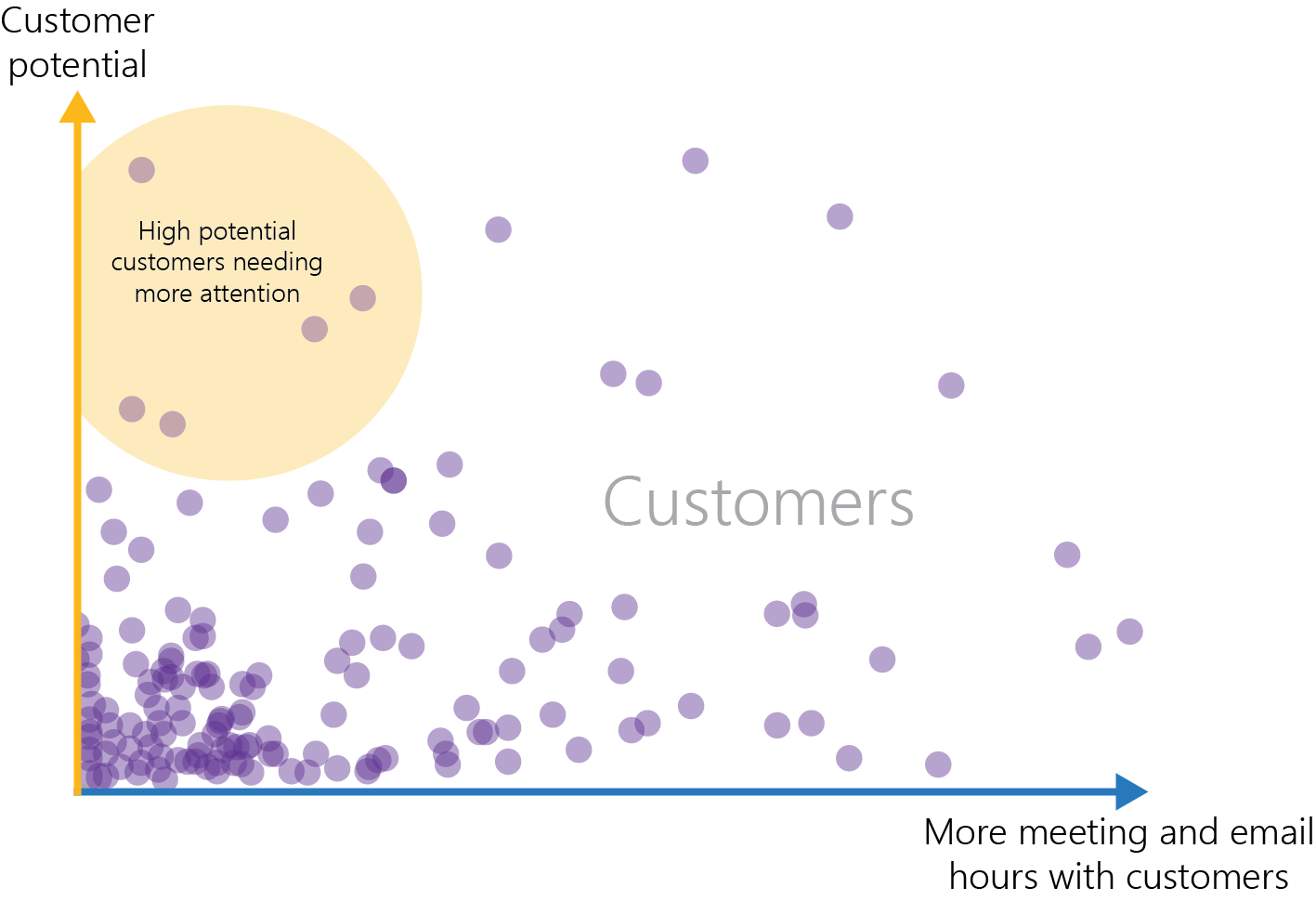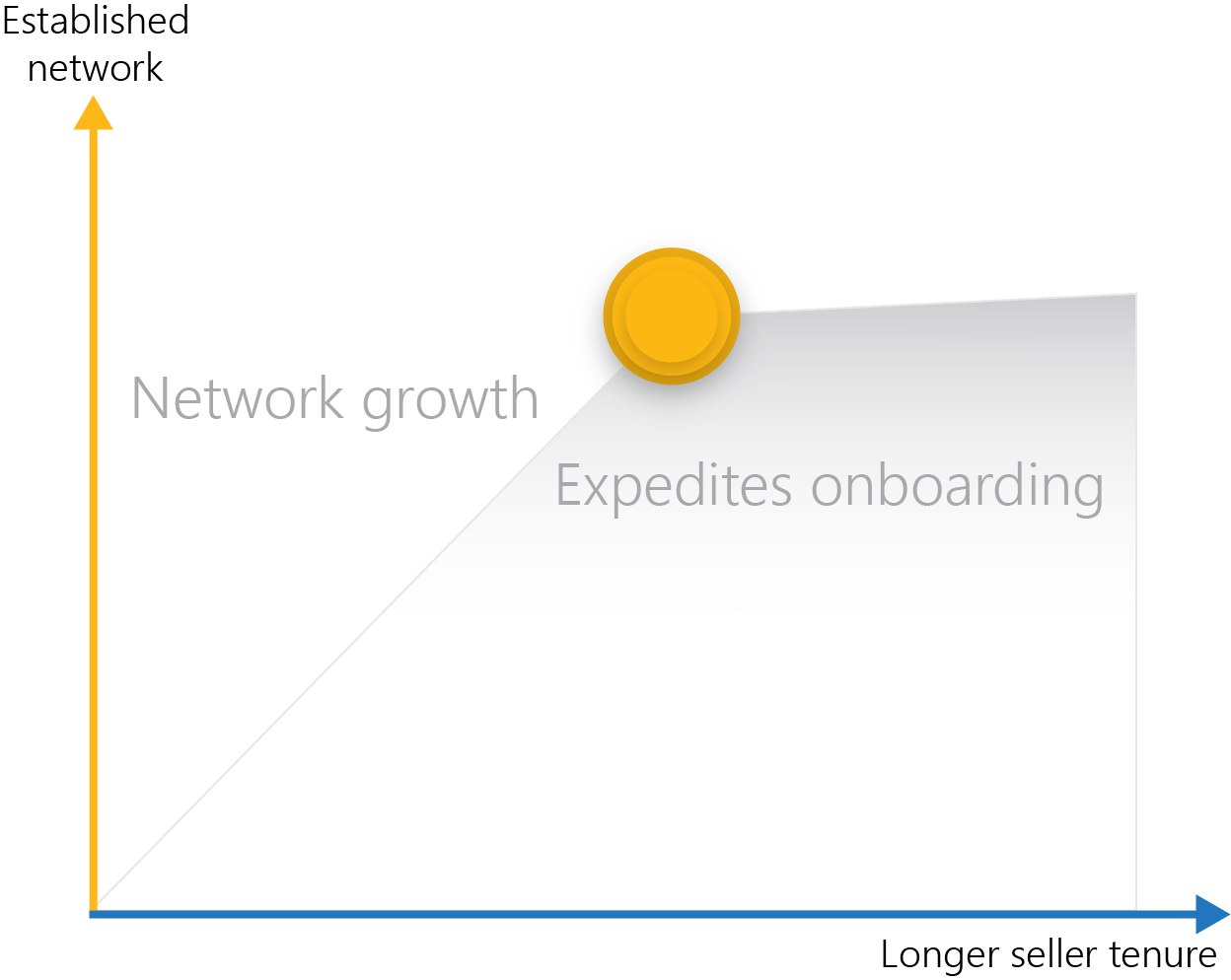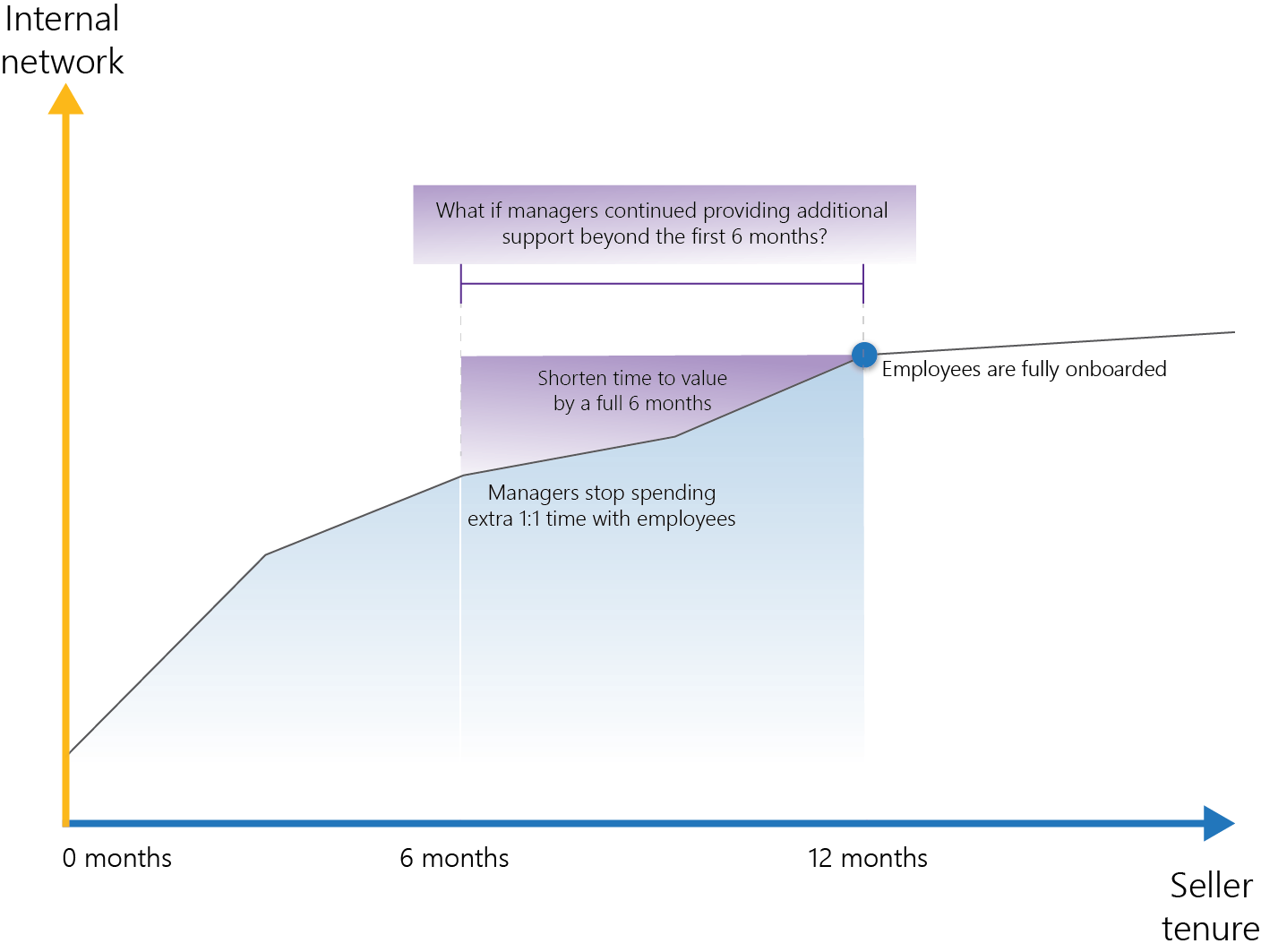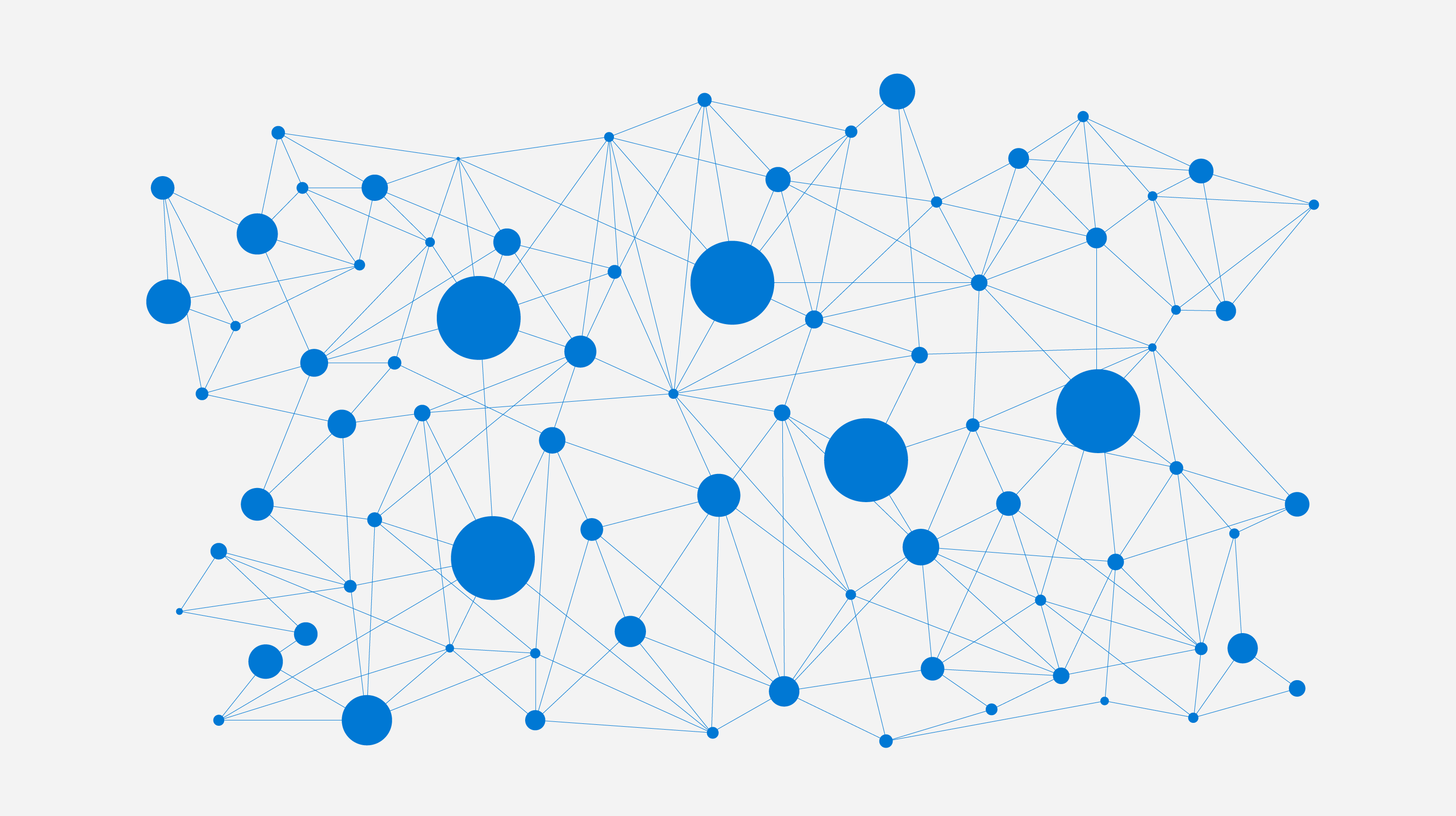
Case study: Transforming global commercial sales with Microsoft Viva Insights
A sales organization turns to behavioral analytics to accelerate digital transformation and improve sales.
In 2017, Microsoft undertook a major overhaul of its sales organization as part of a broader digital transformation underway at the company. The company’s global sales organization was positioned to optimize the massive opportunities presented by the migration of computing to the cloud. The changing market landscape, a new product mix, and the shift from a licensing to a subscription model meant that the company needed a new way to go to market and improve sales.
To unlock sales in this new cloud-services model and be successful in the transformation, sales leadership knew that it would have to evolve the way salespeople and managers work—increasing efficiency and teamwork, better responding to customers’ needs, and up-leveling conversations with decision makers. But to transform the culture of work would first require a better understanding of how work was actually happening in the organization. Once sales leadership understood this, it could quantify which actions drove desired outcomes and which didn’t, and the leaders could then refine their approach.
To figure out what it would take to succeed in the new environment, Microsoft created a Strategy and Analytics team focused not on anecdotes, institutional knowledge, or intuition—no matter how widely accepted—but on data. A primary mission of the team was to uncover the “secret sauce”—the behaviors of sellers who outperformed their peers, which could be replicated as best practices across the organization and collectively influence successful outcomes.
Our industry does not respect tradition—it only respects innovation.Satya Nadella, in his first email to the company as CEO
The journey that Microsoft’s global sales organization underwent is a powerful use case that shows other organizations how focusing on the ways in which their people work is the key to unlocking customer obsession.

Harnessing Viva Insights to improve sales
To help achieve its goal, the Strategy and Analytics team decided to harness a newly launched Microsoft product called Viva Insights. Viva Insights analyzes metadata already being generated from everyday work in Microsoft Office 365 to surface insights about internal and external networks, collaboration behaviors, coaching and mentoring, meeting effectiveness, and more. Analyzed at the group level, the aggregated and de-identified data gives leaders a previously unavailable set of powerful, customizable, and objective metrics that describe how work gets done. With these insights, organizations are empowered to explain and predict the impact of day-to-day actions, and to then drive change.
A targeted work team within Strategy and Analytics that became known as Advanced and Behavioral Analytics (ABA) began conducting early projects to better understand the capabilities and best uses of Viva Insights and see how it could help improve sales. One such project studied the data from a premier group of global specialist sellers. Some key insights emerged from the behaviors of sellers who outperformed their peers.
While these results were largely intuitive, the pilot project was important for a few reasons. It showed that behavioral data, combined with outcome data, could be used to define best practices for success. It confirmed some long-held beliefs and put hard numbers around anecdotal information. And it demonstrated that measurable targets could be created for leadership to point sellers to. All this indicated that the type of intelligence Viva Insights provided access to could help global sales leaders further strategic objectives to transform their sales approach.
The sales-strategy team had identified an ideal opportunity to make use of one of its newest products, quickly proving the breadth of possibilities unlocked by applying new data to age-old challenges. In order to fully realize the value of this data and ultimately improve sales, the team would now need to build wider interest in the time-management initiative—a cultural challenge they were on board for.
The cultural challenge
Digital transformation is not just about adopting new digital tools and techniques; it’s about changing culture within a workplace so that companies can move faster, innovate more, better engage employees, and better serve customers. Eighty-four percent of CEOs believe digital disruption of their business is imminent, according to Harvard Business Review. But culture—more so than talent, technology, or data—is seen by executives as the single biggest challenge to digital transformation. Research shows that 70 percent of transformations fail, and 70 percent of those failures are due to culture-related issues. Behavioral analytics is critical to understanding, and thereby changing, culture.
Executive sponsorship is critical, and we couldn’t have gotten our analysis off the ground without it. Their support helped us get the right level of visibility for continuous analysis and digging deeper….Ryan Fuller (Corporate VP of Viva Insights and MyAnalytics) and Sanaz Namdar (Director of Behavioral Analytics in Sales), Microsoft
The ABA team quickly recognized the importance of executive sponsorship to the success of the initiative. Bringing in an unfamiliar dataset can create pushback across an organization; an executive’s voice is key to breaking through this. In addition, the ability to align this data (and by proxy, the product) with executive-level priorities is an efficient and effective way to start proving value. An executive can also help push through the cultural and operational resistance to using behavioral analytics.
Chris Weber, Corporate Vice President of Small, Medium, and Corporate within Microsoft’s worldwide commercial business, understands the cultural challenge to digital transformation in his organization. Weber is customer-obsessed and strives to bend his seller organization toward a more customer-focused culture at every opportunity. He became interested in the Viva Insights project, and eventually became an executive sponsor, because of its potential to help him reshape the corporate culture around him and improve sales.
In addition to lining up the right support, the ABA team quickly learned that it would be critical to have a decision-making framework. Even as safeguards are built right into the Viva Insights platform, and Microsoft 365 cloud security helps keep data safe and private, ABA knew the sensitivity of this data and the risks associated with it. To address this, it created and then matured a governance model as the analytics grew in usage. The governance model was explicit about who used the data and how. And because the team could not have predicted all usages and factors up front, the governance model defined a path through which future uses and questions could always be addressed.
With this careful attention to building support and addressing privacy concerns, the initiative gained critical approval from Human Resources (HR) and Legal leadership—another level of support that the team learned was crucial and should be pursued early in the process. Meanwhile, demand was growing among sellers and managers to implement Viva Insights more widely so they could begin to benefit from insights derived from the dataset and improve sales.
Going big to improve sales
The ABA team made Viva Insights a core part of its operating rhythm, democratizing the data in three key ways:
This approach allowed Microsoft to provide a set of top-down insights to sales leaders in a de-identified and aggregated manner, in addition to providing a private and highly personalized set of bottom-up insights directly to individual sellers.
Leaders have access to a behavioral-insights dashboard displaying three types of insights about their organization’s working patterns. The first set of insights—drawn from the early project work—covers behaviors that are correlated with successful outcomes, such as customer-contact metrics. The second set of insights tracks team behaviors related to the strategic priorities that sales leadership considers central to digital-transformation goals, such as new approaches to teamwork. The third set shows leaders which accounts their sellers are investing in. Leaders utilize these insights to help ensure that their teams are operating in line with best practices and are investing their time in activities that align with longer-term organizational goals and can help improve sales.
Individual sellers, on the other hand, receive a highly personalized set of weekly insights about their own work patterns, along with recommended actions. These insights, delivered via email, are only available to the seller himself or herself. They provide the seller with insights about the same critical behaviors that leaders see in their dashboards. These include how well the sellers make use of key internal resources and how their time investments in assigned accounts compares to the value of those accounts. Collectively, the insights provide a way for sellers to reflect on their past behaviors in ways that sellers readily admit they hadn’t been able to do before this program.
Early insights and actions
As Viva Insights rolled out to a wider deployment, additional actionable insights began to emerge. The following are a few of the important early insights.

Insight 1: High-growth vs. high-potential accounts
Sellers and executives were spending more time with customers in high-growth accounts, data showed. But what became clear was that another important segment of customers—the 15 percent of low-growth accounts that have high potential—weren’t receiving enough attention. With this insight, leaders saw an immediate opportunity to track progress toward one of the organization’s key transformation goals: to better focus precious resources on the most important customers.

Insight 2: External and internal network size
Higher sales outcomes correlated with larger seller networks—not just larger external customer networks, but also larger internal networks within the sales organization and elsewhere in Microsoft. This finding—which counters a commonly held belief that time with customers is the only important networking sellers need to do—offered data-driven support for the developing new approaches to teaming that break down barriers and cross organizational lines.

Insight 3: Integration time
As noted earlier, a seller’s internal network is critical to success. The Viva Insights data also uncovered three additional points:
1. It took newly hired sellers 12 months to fully integrate and build their networks.
2. Managers are key enablers to growing employees’ networks.
3. Managers only provided additional support for the first 6 months of a sellers’ tenure.
For leaders, these insights pointed to a huge opportunity: managers could drastically shorten the time-to-value of new sellers through more direct, dedicated support.
Other insights
The ABA team continues to experiment, innovate, and expand the Viva Insights initiative. The team has combined Viva Insights data with other sources of key metrics, including seller networking data from LinkedIn Sales Navigator and customer-satisfaction metrics from surveys, to find new actionable insights.
In one experiment, Viva Insights data was added to an existing machine-learning model that predicts customer satisfaction based on numerous factors. The accuracy of the prediction, which previously sat at 70 percent, increased to 90 percent with the inclusion of the Viva Insights metric, reducing the model’s error rate by 67 percent. Moreover, one of the new data points—customer collaboration hours—became the top predictive value in the system, and one of the most actionable.
The road ahead
Chris Weber does not consider Viva Insights a one-time tool or tactic—far from it. He views the solution as part of the ongoing cultural-transformation journey. “A lot of the issues we face aren’t tech issues but business process and human/cultural issues,” said Weber. “It’s really important—and sometimes difficult—to get buy-in from everyone.”
This initiative goes well beyond a data-driven effort to improve sales outcomes. It is critical to changing culture. And more than simply a tool to track sellers’ time, Viva Insights enables a new data-driven practice that unlocks considerable untapped value within a workforce through ongoing insights. Toward that end, Weber is pushing on three main fronts to improve both the metrics and the culture of his organization:
A lot of the issues we face aren’t tech issues but business process and human/cultural issues. It’s really important—and sometimes difficult—to get buy-in from everyone.Chris Weber, Corporate VP of Small, Medium, and Corporate, Microsoft
Culture does not change overnight. It evolves slowly, with gradual behavioral shifts of individuals and groups. And transformations, once made, do not always stick. People need to understand what change is happening, feel engaged in the change, and see proof of its success before they become fully committed to the process.
Viva Insights is not just a source of actionable insights based on behavioral data—it’s also a key tool that leaders can use to, in Weber’s words, “pressurize the system” for transformation.





